Organization:National Heart, Lung, and Blood Institute
 | |
| Agency overview | |
|---|---|
| Formed | June 16, 1948 |
| Jurisdiction | Federal government of the United States |
| Agency executive |
|
| Parent department | United States Department of Health and Human Services |
| Parent agency | National Institutes of Health |
| Website | www |
The National Heart, Lung, and Blood Institute (NHLBI) is the third largest Institute of the National Institutes of Health, located in Bethesda, Maryland, United States. It is tasked with allocating about $3.6 billion in FY 2020[1] in tax revenue to advancing the understanding of the following issues: development and progression of disease, diagnosis of disease, treatment of disease, disease prevention, reduction of health care disparities within the American population, and advancing the effectiveness of the US medical system. NHLBI's Director is Gary H. Gibbons (2012–present).
Operation
In 1948, the National Heart Act established the National Heart Institute and the National Advisory Heart Council. The intramural research program was established a year later in 1949. In 1969, the National Heart Institute was renamed the National Heart and Lung Institute, and the scope of the institute was expanded. In 1976, it was given its current name, the National Heart, Lung, and Blood Institute. It had been designated as the agency responsible for blood research by the National Heart, Blood Vessel, Lung, and Blood Act of 1972, after the newly created National Sickle Cell Disease Program was put under its aegis.[2]
The Institute plans, conducts, fosters, and supports an integrated and coordinated program of basic research, clinical investigations and trials, observational studies, and demonstration and education projects.[3] Research is related to the causes, prevention, diagnosis, and treatment of heart, blood vessel, lung, and blood diseases, and sleep disorders. The NHLBI plans and directs research in development and evaluation of interventions and devices related to prevention, treatment, and rehabilitation of patients with such diseases and disorders. It also supports research on clinical use of blood and all aspects of the management of blood resources. Research by scientific institutions and individuals is supported by research grants and contracts through the NHLBI Extramural Program, while the NHLBI Division of Intramural Research conducts state-of-the-art research on the NIH Bethesda campus in its own laboratories.[citation needed]
For health professionals and the public, the NHLBI conducts educational activities, including development and dissemination of materials in the above areas, with an emphasis on prevention.[citation needed]
The NHLBI supports research training and career development of new and established researchers in fundamental sciences and clinical disciplines to enable them to conduct basic and clinical research related to heart, blood vessel, lung, and blood diseases, sleep disorders, and blood resources through individual and institutional research training awards (T90/R90), career development awards (K), and fellowships (i.e. T32/F32).[citation needed]
The NHLBI coordinates relevant activities in the above areas, including the related causes of stroke, with other research institutes and federal health programs. Relationships are maintained with institutions and professional associations, and with international, national, state, and local officials as well as voluntary agencies and organizations working in the above areas.[citation needed]
The NHLBI Division of Intramural Research (DIR)[4] in Bethesda conducts research and training in a wide variety of areas broadly related to the mission of the institute, both clinical research and basic science research. There are 60 investigators, each of whom runs their own research program. They are supported by a group of core services that implement state-of-the-art techniques available to all NHLBI investigators. Marshall Nirenberg, Nobel laureate for his part in the discovery of the genetic code, became the head of the Section of Biochemical Genetics in 1962. The DIR also has a large training component, with opportunities for undergraduate, graduate, and medical students as well as post-doctoral training.
The NHLBI sponsors National Wear Red Day and the Heart Truth campaign, a national awareness campaign for women about heart disease.
Organization
The research arm of the institute is organized into the following divisions:[2]
- Biochemistry and Biophysics Center
- Cardiovascular and Pulmonary Branch
- Cardiovascular Epidemiology and Human Genomics Branch
- Cell & Developmental Biology Center
- Center for Molecular Medicine
- Hematology Branch
- Immunology Center
- Population Sciences Branch
- Sickle Cell Branch
- Systems Biology Center
Past directors
List of NHLBI directors from 1948 - present[5]
| Portrait | Director | Took office | Left office |
|---|---|---|---|
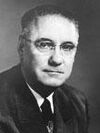
|
Cassius James Van Slyke | August 1, 1948 | November 30, 1952 |

|
James Watt | December 1, 1952 | September 10, 1961 |
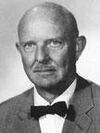
|
Ralph E. Knutti | September 11, 1961 | July 31, 1965 |

|
William H. Stewart | August 1, 1965 | September 24, 1965 |
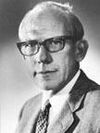
|
Robert P. Grant | March 8, 1966 | August 15, 1966 |

|
Donald S. Fredrickson | November 6, 1966 | March 1968 |

|
Theodore Cooper | March 15, 1968 | April 19, 1974 |
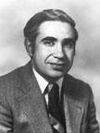
|
Robert I. Levy | September 16, 1975 | June 1981 |
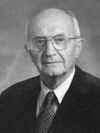
|
Claude Lenfant | July 1, 1982 | September 2, 2003 |

|
Barbara Alving (acting) | September 3, 2003 | January 31, 2005 |

|
Elizabeth Nabel | February 1, 2005 | November 30, 2009 |

|
Susan Shurin (acting) | December 1, 2009 | August 10, 2012 |

|
Gary H. Gibbons | August 13, 2012 | Present |
See also
- Cardiac Arrhythmia Suppression Trial
- Dietary Approaches to Stop Hypertension
Notes and references
- ↑ Philippidis, Alex (2020-09-21). "Top 50 NIH-Funded Institutions of 2020" (in en-US). https://www.genengnews.com/a-lists/top-50-nih-funded-institutions-of-2020/.
- ↑ 2.0 2.1 "National Heart, Lung, and Blood Institute (NHLBI)" (in EN). 9 July 2015. https://www.nih.gov/about-nih/what-we-do/nih-almanac/national-heart-lung-blood-institute-nhlbi.
- ↑ "National Heart, Lung, and Blood Institute". USA.gov. https://www.usa.gov/federal-agencies/national-heart-lung-and-blood-institute.
- ↑ "Division of Intramural Research". 2016-02-09. https://www.nhlbi.nih.gov/research/intramural.
- ↑ "List of NHLBI Directors". 9 July 2015. https://www.nih.gov/about-nih/what-we-do/nih-almanac/national-heart-lung-blood-institute-nhlbi.
External links
- Official website
- NHLBI Homepage
- NHLBI account on USAspending.gov
- John T. Watson Papers (1964-2003) - National Library of Medicine finding aid for a former administrator of the NHLBI's artificial heart program
[ ⚑ ] 39°00′13″N 77°06′05″W / 39.00356°N 77.10133°W
 |

